Wildlife Division - Community Science / Volunteer Opportunities
Many of Connecticut's wildlife conservation programs are dependent on the assistance of volunteers. Please browse the descriptions below and contact us if you would like more information on getting involved.
- Master Wildlife Conservationist Program
- iNaturalist Project - Discover Outdoor Connecticut
- Bald Eagle Citizen Science Projects
- Bobcat Research Project
- Report Sightings of Fishers
- Wild Turkey Brood Survey
- Report Ruffed Grouse
- Purple Martin Colony Monitoring
- Chimney Swift Watch
Master Wildlife Conservationist Program

The Master Wildlife Conservationist Program is an adult education program based in Burlington, Connecticut, at Sessions Woods Wildlife Management Area that trains participants in the fields of wildlife management, natural history, and interpretation. The purpose of the Program is to develop a volunteer corps capable of providing outreach and education on behalf of DEEP to environmental organizations, libraries, schools, and the general public. Master Wildlife Conservationists also assist Wildlife Division Staff with projects and fieldwork.
To learn more about the Program and how to get involved, please select this link.
iNaturalist Project - Discover Outdoor Connecticut
 Discover, track, and share your observations of Connecticut's wildlife alongside our DEEP Wildlife Division biologists, Master Wildlife Conservationists (MWCs), and other dedicated volunteers as we try to identify as many plants and animals as possible from across the State. The purpose of the Discover Outdoor Connecticut iNaturalist Project is to engage every level of naturalist across Connecticut and help residents learn more about the plants and animals that share the land, water, and air with us. We will also be sharing information about other collection projects, events, and volunteer opportunities throughout the year, including pollinator week, migratory bird day, and many more!
Discover, track, and share your observations of Connecticut's wildlife alongside our DEEP Wildlife Division biologists, Master Wildlife Conservationists (MWCs), and other dedicated volunteers as we try to identify as many plants and animals as possible from across the State. The purpose of the Discover Outdoor Connecticut iNaturalist Project is to engage every level of naturalist across Connecticut and help residents learn more about the plants and animals that share the land, water, and air with us. We will also be sharing information about other collection projects, events, and volunteer opportunities throughout the year, including pollinator week, migratory bird day, and many more!
Not sure what you have found? Post your photo of an unknown species to the project, and everyone else taking part can help identify what you have found.
New to iNaturalist? View our iNaturalist Webinar to help get you started.
Bald Eagle Community Science Projects
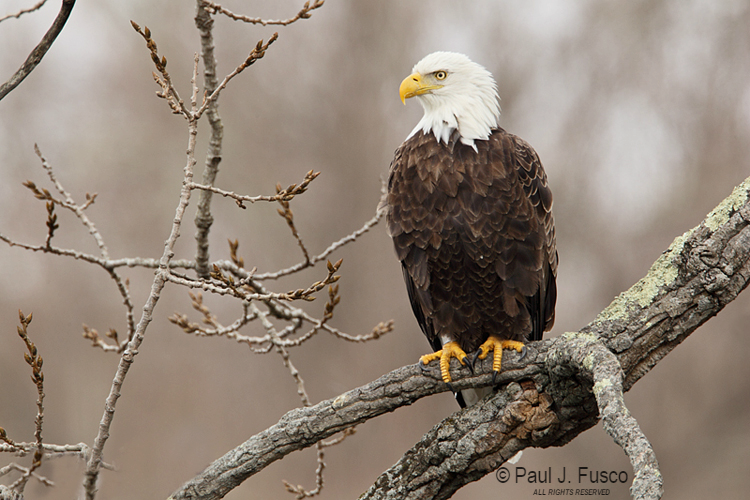 The DEEP Wildlife Division monitors nesting bald eagles in Connecticut. Almost all information about new nests and the status of existing nests comes from volunteers. This information is critical to allow the Wildlife Division to protect individual nests and Connecticut’s bald eagle population.
The DEEP Wildlife Division monitors nesting bald eagles in Connecticut. Almost all information about new nests and the status of existing nests comes from volunteers. This information is critical to allow the Wildlife Division to protect individual nests and Connecticut’s bald eagle population.
The Division also participates in an annual Midwinter Eagle Survey in early January and relies on volunteers to survey certain waterbodies and rivers to document the presence of wintering eagles.
How Do I Participate?
Please visit our Bald Eagles in Connecticut webpage to find out what you need to know about Connecticut's bald eagle nesting season and the Midwinter Eagle Survey.
Bobcat Research Project
 The Wildlife Division conducted a bobcat research project to determine habitat use for bobcats within Connecticut. Data collected from this project is being used to determine the abundance and distribution of bobcats in the state.
The Wildlife Division conducted a bobcat research project to determine habitat use for bobcats within Connecticut. Data collected from this project is being used to determine the abundance and distribution of bobcats in the state.
Although the field work portion of this project has been completed, the Wildlife Division is still seeking bobcat sighting reports. This is a great way to partner with the Wildlife Division to help monitor the state's bobcat population!
What Is Involved?
Community scientists are asked to report bobcat observations. Eligible reports can be live sightings, road-killed or deceased bobcats, or signs and tracks of bobcats. When reporting an observation, please provide a date of when the sighting took place, town, number of individuals observed, and whether any individuals had ear tags.
To learn more about the project, visit DEEP's Bobcats in Connecticut webpage.
View a map of current bobcat sightings in Connecticut.
Anyone who finds a ROAD-KILLED BOBCAT is urged to call the Wildlife Division at 860-424-3011 and provide location details. (Please do not report sightings at this number. Select the link above.) To ensure the bobcat carcass remains until DEEP staff are able to collect it, we additionally ask (if the situation is SAFE) that you move the bobcat further from the road and cover it with branches or a bag. Avoid handling the carcass and use a shovel, branch, or other item to move it.
Report Sightings of Fishers
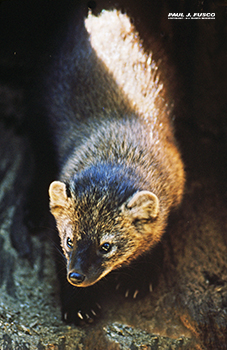
The Wildlife Division is collecting sighting reports to help monitor Connecticut's fisher population. The fisher is a large member of the Mustelidae (weasel) family that prefers large tracts of coniferous or mixed hardwood-softwood forests. Report your observations to deep.FisherSightings@ct.gov. Be sure to include the date, time, location, and any photos or video of your sighting. Please note that many people claim to have heard fisher calls that sound similar to a person "crying". In reality, those calls are most likely coming from a red fox (fishers are not very vocal). Report vehicle-killed or other deceased fishers to DEEP's 24-hour Dispatch Center at 860-424-3333 or deep.dispatch@ct.gov so they can be collected for research.
The Wildlife Division is currently conducting a research project on fishers, and you may see some fishers with radio collars. Please report any radio-collared fishers to deep.FisherSightings@ct.gov or 860-424-3722.
Wild Turkey Brood Survey
The Wildlife Division conducts the annual Wild Turkey Brood Survey to estimate the average number of turkey poults (young-of-the-year) per hen statewide and to assess annual fluctuations in the turkey population. This index allows the Division to gauge annual reproductive success and to evaluate recruitment of new birds into the fall population. Weather, predation, and habitat conditions during the breeding and brood-rearing seasons can all significantly impact nest success, hen survival, and poult survival.
What Is Involved?
From June 1 to August 31, volunteers are asked to record all of the hens, poults, and toms or jakes (males) observed during normal travel (please only submit sighting reports during June 1 and August 31). (See photos below to help with identification.)
To participate, use the new online form (reporting form will be live starting June 1) after each turkey brood sighting during June 1 and August 31. As in previous years, paper copy submissions will still be accepted at the end of the season (starting September 1). Download a Wild Turkey Observation Form to record your observations (instructions are found on the data sheet). This is a great way to partner with the Wildlife Division to help monitor the state's wild turkey population.
Who to Contact:
Completed paper Observation Forms should be returned, starting September 1, to: Will Cassidy, DEEP Wildlife Division, Franklin WMA, 391 Route 32, North Franklin, CT 06254 (860-418-5961) or email william.cassidy@ct.gov.
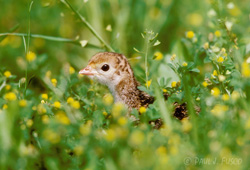
Young turkey poults are difficult to see in the tall grass and vegetation. Please provide an accurate poult and hen count when participating in the survey.
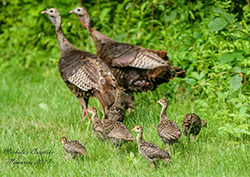
Hen turkeys are buff-colored with feathering to the top of the head.
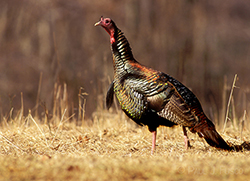
Toms are large, with black iridescent coloring in the feathers and a red, white, and blue-colored head.
Report Ruffed Grouse
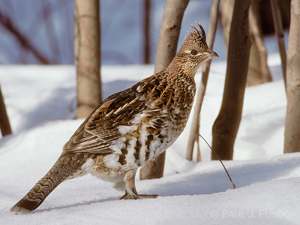 All members of the public are asked to report grouse sightings, which may consist of actual bird observations or drumming activity. To report grouse sightings, please contact Division biologist Will Cassidy at william.cassidy@ct.gov or 860-418-5961.
All members of the public are asked to report grouse sightings, which may consist of actual bird observations or drumming activity. To report grouse sightings, please contact Division biologist Will Cassidy at william.cassidy@ct.gov or 860-418-5961.
To obtain grouse distribution and harvest information, the Wildlife Division is asking grouse hunters to submit hunting reports through the Ruffed Grouse Hunter Log.
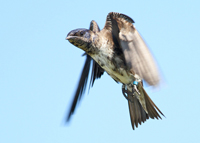
Purple Martin Colony Monitoring
Sightings of banded purple martins WANTED! You can help by keeping an eye out for banded purple martins starting in spring and reporting them to the Wildlife Division. Are you a purple martin landlord with a colony on your property? Learn more about this species of special concern and how to get involved.
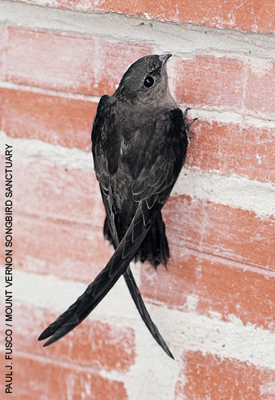
Chimney Swift Watch
Chimney Swift Watch is a regional initiative to more thoroughly assess the chimney swift population in Connecticut.
What Is Involved?
Volunteers are needed to monitor chimney swift roosting and nesting chimneys located throughout the state. The Wildlife Division also is requesting reports from property owners who have chimney swifts in their chimneys. (Learn more)
The Chimney Swift Watch webpage also provides general information about chimney swifts and a curriculum program developed for students in grades 1-2, as well as a Chimney Swift Ambassador program for high school students.
Content last updated in October 2025.

